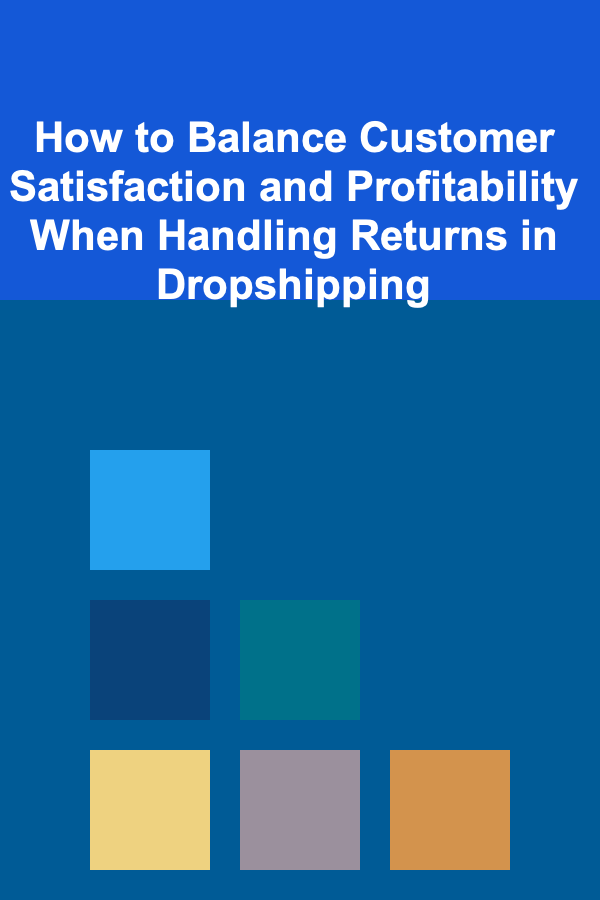
How to Monetize Your Mobile App: Strategies for Success
ebook include PDF & Audio bundle (Micro Guide)
$12.99$10.99
Limited Time Offer! Order within the next:
Not available at this time

In today's digital age, mobile apps have become integral to daily life. From social media to shopping, gaming, and productivity, there is a mobile app for almost everything. However, creating an app is only the first step in a long journey towards building a successful business. One of the most crucial aspects of this journey is app monetization. Without a proper monetization strategy, even the best app can fail to generate revenue. In this article, we will explore the various methods and strategies to monetize your mobile app successfully.
Understanding Mobile App Monetization
Monetizing a mobile app refers to the process of generating revenue from the app, which can be achieved through various strategies depending on the app's purpose, audience, and market.
Mobile apps can be monetized in several ways, each with its own set of advantages and challenges. The best monetization strategy for your app depends on factors like the type of app (e.g., game, utility, social), your target audience, and the overall user experience you want to offer. Below, we'll explore the most popular and effective monetization methods for mobile apps.
In-App Advertising
In-app advertising is one of the most common monetization strategies for free apps. It allows you to display ads within your app, and you get paid every time a user interacts with those ads. There are several types of in-app ads, including banner ads, interstitial ads, video ads, and native ads.
Types of In-App Ads
- Banner Ads: These are static or animated ads that appear at the top or bottom of the app's screen. They don't interrupt the user experience but can be less effective in terms of engagement.
- Interstitial Ads: Full-screen ads that appear at transition points within the app, such as between activities or when moving from one screen to another. While they can be more engaging, they may also disrupt the user experience if overused.
- Video Ads: These ads typically offer users a reward (like extra lives in games) in exchange for watching a short video. Video ads are highly engaging and can generate good revenue, especially if the reward is desirable to the user.
- Native Ads: These ads blend seamlessly into the content of the app and are less intrusive than traditional display ads. Native ads are often more effective at generating clicks because they match the look and feel of the app.
Pros and Cons of In-App Advertising
Pros:
- Passive Revenue: Once integrated, in-app ads can generate revenue with little ongoing effort.
- Scalable: The more users you have, the more ad impressions you can sell, increasing revenue.
- Free App Model: Ads allow you to keep your app free for users while still earning money.
Cons:
- User Experience: Ads can detract from the user experience, especially if they're frequent or intrusive.
- Ad Blockers: Some users may use ad-blocking software, which can reduce the effectiveness of your ads.
In-App Purchases (IAP)
In-app purchases involve offering users additional features, content, or functionality within the app in exchange for payment. This monetization method works particularly well for games and apps that offer premium content or services.
Types of In-App Purchases
- Consumable Purchases: These are items that can be used up or depleted, such as virtual currency, extra lives, or energy in a game. Once the item is used, the user can purchase it again.
- Non-consumable Purchases: These are one-time purchases that unlock permanent features or content, such as removing ads, unlocking new levels, or accessing premium features.
- Subscriptions: Offering users recurring access to premium content or services, such as exclusive features or new content delivered regularly. Subscriptions provide a steady stream of revenue and are popular in apps offering ongoing services (e.g., fitness apps, content streaming, or productivity tools).
Pros and Cons of In-App Purchases
Pros:
- High Revenue Potential: In-app purchases, especially subscriptions, can provide a consistent and high level of revenue.
- User Retention: Offering valuable in-app purchases encourages users to return to your app regularly.
- User Control: Users appreciate the flexibility of choosing which additional features or content to purchase.
Cons:
- User Hesitance: Some users may be reluctant to spend money on in-app purchases, especially if the app doesn't offer enough value upfront.
- Balancing Free vs. Paid Content: It's important to offer enough free content to engage users, while also providing enough premium content to encourage purchases.
Subscription Models
Subscription-based monetization is particularly effective for apps that offer ongoing services or content, such as news apps, fitness apps, and video streaming services. With subscriptions, users pay on a recurring basis (weekly, monthly, or annually) for access to exclusive content, services, or premium features.
Benefits of Subscription Models
- Steady Revenue Stream: Subscriptions provide a predictable and ongoing revenue stream, making it easier to forecast future income.
- Customer Loyalty: Subscription models encourage long-term customer relationships. If users find value in your app, they're more likely to remain subscribed over time.
- Value-Based Pricing: With a subscription model, you can offer a tiered pricing structure, where users pay more for additional features or services.
Tips for Successful Subscription Monetization
- Offer a Free Trial: Providing a free trial helps users experience the full value of your app, which can increase conversion rates to paid subscriptions.
- Frequent Updates and Content: For subscriptions to be successful, you need to continually offer fresh content or new features to keep users engaged.
- Clear Value Proposition: Clearly explain what users get with a subscription and why it's worth the recurring cost.
Selling Your App
For some developers, the most straightforward way to monetize an app is to sell it outright. This can either be a one-time sale in the app store (a paid app model) or the outright sale of the app to another company.
Paid App Model
- Paid apps require users to purchase the app upfront before they can download and use it. This model works well if you offer a unique and high-quality product that justifies the price.
- The challenge is that many users prefer free apps, and the app marketplace is often crowded. A paid app needs to offer substantial value to overcome this barrier.
Selling the App
If your app has gained significant traction and a solid user base, it could be attractive to potential buyers. Some companies may be willing to purchase your app, either to integrate it into their own ecosystem or to capitalize on its user base and revenue potential.
Affiliate Marketing
Affiliate marketing is another viable strategy for monetizing a mobile app. It involves promoting third-party products or services within your app and earning a commission when users make a purchase through your affiliate links.
This method works best if your app has a strong user base interested in specific products or services. For example, if you have a fitness app, you could partner with companies selling fitness equipment, supplements, or workout gear and earn a commission on any purchases made through your affiliate links.
Pros and Cons of Affiliate Marketing
Pros:
- Low Effort: Once you've set up affiliate marketing partnerships, it can be a low-maintenance source of passive income.
- No Need for Product Creation: You don't need to create your own products; you're simply promoting other people's goods.
Cons:
- Limited Control: Your revenue depends on the success of the third-party product you're promoting.
- User Trust: Users may be skeptical of affiliate links if they feel the app is pushing products too aggressively.
Crowdfunding
If your app is in the early stages of development or if you're planning a significant update or expansion, crowdfunding can be a viable monetization method. By reaching out to your user base or interested backers, you can raise funds to support the development of new features, marketing campaigns, or app improvements.
Crowdfunding platforms like Kickstarter, Indiegogo, or GoFundMe allow you to showcase your app to potential backers who believe in your vision and are willing to fund your development efforts in exchange for rewards or early access.
Pros and Cons of Crowdfunding
Pros:
- Initial Funding: Crowdfunding can provide the necessary capital to launch or expand your app.
- Community Engagement: It creates a sense of community and loyalty among your backers, who will feel more connected to the success of your app.
Cons:
- Uncertain Outcome: There's no guarantee that your crowdfunding campaign will be successful.
- Time and Effort: Running a successful crowdfunding campaign requires a lot of time and effort to market and manage.
Choosing the Right Monetization Strategy for Your App
Selecting the right monetization strategy for your app is crucial for its long-term success. Here are some key considerations:
- Understand Your Audience: Know your users' preferences and behaviors. Are they more likely to engage with ads or make in-app purchases?
- Balance User Experience and Revenue Generation: Ensure that your monetization method doesn't negatively affect the user experience. Too many ads or overly aggressive monetization tactics can drive users away.
- Test and Iterate: Don't be afraid to experiment with different monetization methods. Track your results, adjust your strategy, and continually optimize for the best performance.
Conclusion
Monetizing a mobile app is a complex but rewarding process that requires careful planning and consideration. By exploring and implementing the right strategies---whether through in-app advertising, in-app purchases, subscriptions, or affiliate marketing---you can create a sustainable revenue model for your app. Keep in mind that your monetization approach should always align with your app's core value proposition and the needs of your users. With the right strategy, you can turn your app into a profitable business.

Bargain Hunting 101: How to Find the Best Deals Every Time
Read More
Beginner Guide: The Basics of Machine Learning
Read More
How to Balance Customer Satisfaction and Profitability When Handling Returns in Dropshipping
Read More
How to Explore Different Cultures Through Food Nights
Read More
How to Incorporate Personal Touches into Your Holiday Decor
Read More
How To Stay Focused Amidst Travel Distractions
Read MoreOther Products

Bargain Hunting 101: How to Find the Best Deals Every Time
Read More
Beginner Guide: The Basics of Machine Learning
Read More
How to Balance Customer Satisfaction and Profitability When Handling Returns in Dropshipping
Read More
How to Explore Different Cultures Through Food Nights
Read More
How to Incorporate Personal Touches into Your Holiday Decor
Read More